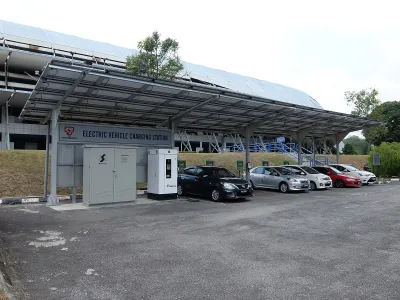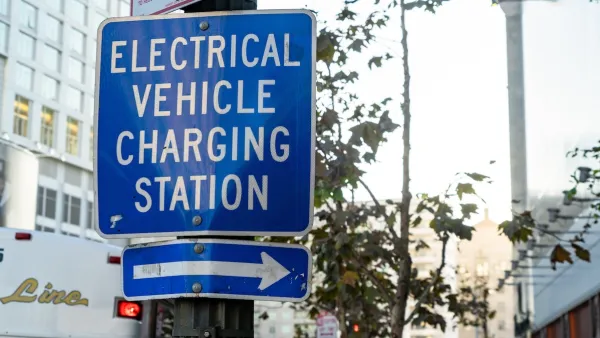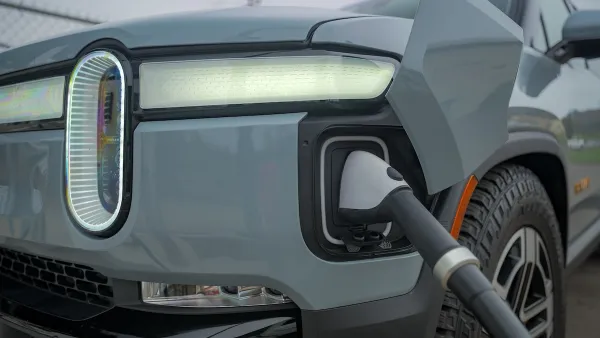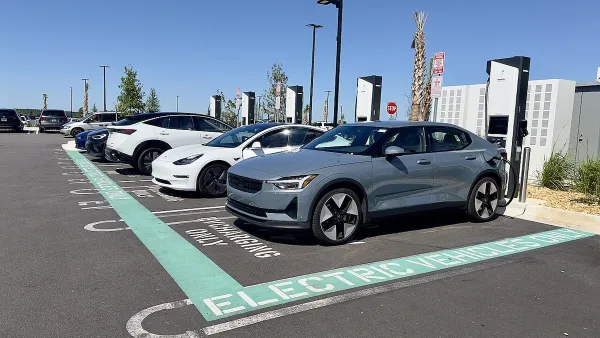With more states outlawing the sales of gas-powered vehicles and the federal government setting ambitious electrification goals, now is the time to invest in critical charging infrastructure.

As policymakers strive to encourage the adoption of electric cars, cities have to contend with finding locations for drivers to charge their vehicles. Henry Grabar reports on the urgent need for more electric car chargers in public parking areas which can serve EV owners living in multi-family buildings who lack access to home charging infrastructure.
According to Grabar,
Many cities are experimenting with EV charging at the curb, and extension cords have been spotted hanging from the windows of East Village tenements and Boston triple-deckers. Street parking has long been a lawless affair, and so far, electric vehicle charging at the curb is working much the same way: every driver for him or herself.
The lack of a concerted effort to bring charging infrastructure to denser neighborhoods, argues Grabar, "raises the possibility that gas-powered cars will continue to dominate in neighborhoods with multifamily housing, and the promise of cleaner air will remain unfulfilled in exactly the places that have suffered the most from the many harms of automobile exhaust."
Grabar goes on to describe the variety of electric vehicle chargers on the market and what he calls the "multidimensional infrastructural problem" that creating a comprehensive charging network poses.
Last month, a group of five Midwestern states joined forces to develop REV Midwest, a network of EV charging stations that will focus on supporting EV adoption in their states, and more states are passing zero-emissions statutes that will prohibit sales of gas-powered vehicles in the next two decades, creating an imminent need for robust charging networks. Meanwhile, the federal infrastructure bill being debated in Congress proposes allocating $7.5 billion to charging infrastructure.
FULL STORY: Where the Heck Are We Going to Charge All of the Electric Cars?

Analysis: Cybertruck Fatality Rate Far Exceeds That of Ford Pinto
The Tesla Cybertruck was recalled seven times last year.

National Parks Layoffs Will Cause Communities to Lose Billions
Thousands of essential park workers were laid off this week, just before the busy spring break season.

Retro-silient?: America’s First “Eco-burb,” The Woodlands Turns 50
A master-planned community north of Houston offers lessons on green infrastructure and resilient design, but falls short of its founder’s lofty affordability and walkability goals.

Test News Post 1
This is a summary

Analysis: Cybertruck Fatality Rate Far Exceeds That of Ford Pinto
The Tesla Cybertruck was recalled seven times last year.

Test News Headline 46
Test for the image on the front page.
Urban Design for Planners 1: Software Tools
This six-course series explores essential urban design concepts using open source software and equips planners with the tools they need to participate fully in the urban design process.
Planning for Universal Design
Learn the tools for implementing Universal Design in planning regulations.
EMC Planning Group, Inc.
Planetizen
Planetizen
Mpact (formerly Rail~Volution)
Great Falls Development Authority, Inc.
HUDs Office of Policy Development and Research
NYU Wagner Graduate School of Public Service




























